Buying a home is most likely the biggest purchase you’ll ever make. But once you’ve made it, the financial commitment doesn’t end there.
Even though sales of existing homes are currently slowing, the amount of money that people are throwing into home renovations continues to boom. American homeowners will spend nearly $340 billion on residential improvements and repairs this year, a 7.5 percent increase from 2017, according to Harvard University’s Joint Center for Housing Studies.
But before you roll up your sleeves and start tackling projects, you need to know which ones will boost your home’s value and which could just wind up costing you a fortune with little return. Is installing a new roof with solar panels worth it? Do you really need a French door refrigerator?
Whether you’re thinking of buying a new house or putting your current home on the market, it’s important to figure out what will bring you the biggest bang for your buck.
First, Bring in a Pro
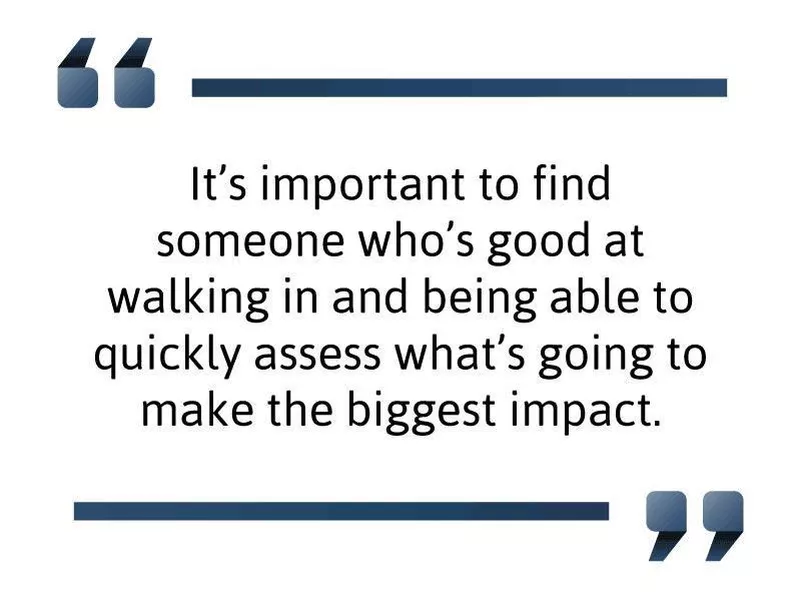
Most of us are facing a sea of possibilities in deciding what we can do to our homes. You’re probably asking, “Where do I start?” That’s where a real estate agent or an interior designer comes in. They can help you understand which home renovations will bring you the greatest return — and realtors will typically give you such advice for free.
Remember: Each house is different, and it’s important to find someone who’s good at walking in and being able to quickly assess what’s going to make the biggest impact. “It depends on the house,” Stephen Pringle, realtor and founder of SFNorth, said. “Some houses, if there’s no yard or they’re in the dark trees, then you don’t want to go too far, right? Because you’re not going to get a good return on investment.”
Once you know what kind of work you want done, make sure you get the right people to do the work. A home inspector can help you find the right crew for the job.
Check Your Levels
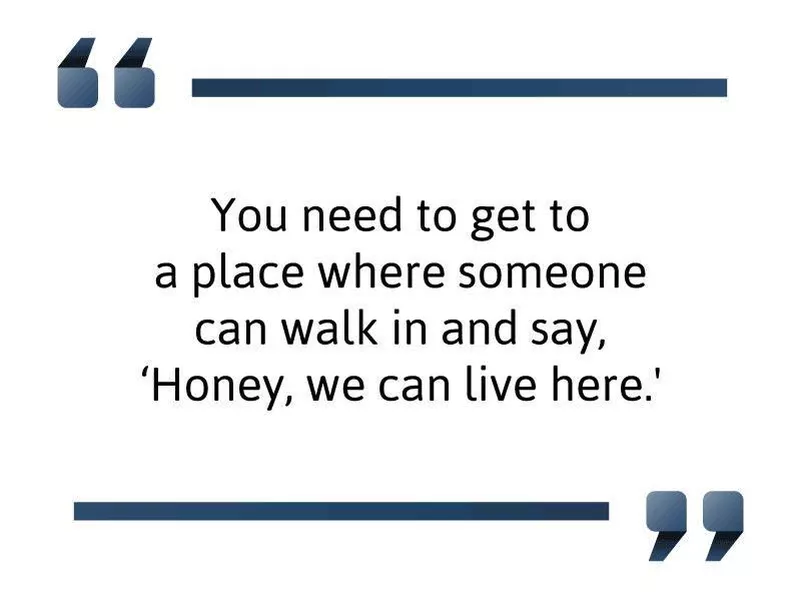
Depending on the house, there are different levels you can take if you’re planning on selling your home, Pringle says.
“Basically, if you get to the point where someone could move in and do stuff later, that is really an important level to get to. You want to capture as many people as possible, and you don’t want to turn those people away since that might be the person who gives you the highest price and maybe the best return.”
Pringle adds, “You can walk through and say, ‘You need to change the dirty carpet or you need to paint walls, but the point is that you need to get to a place where someone can walk in and say, ‘Honey, we can live here and we wouldn’t have to do a bunch to move in.’ That’s key.”
So what will it cost you to get to that point? It could be anywhere from $25,000 to $50,000, according to Pringle. “Our average is about $25,000 to get a house ready, maybe $30,000 now,” Pringle said. “That’s with just basic cosmetic stuff. That’s kind of a baseline.”
Make a Good First Impression
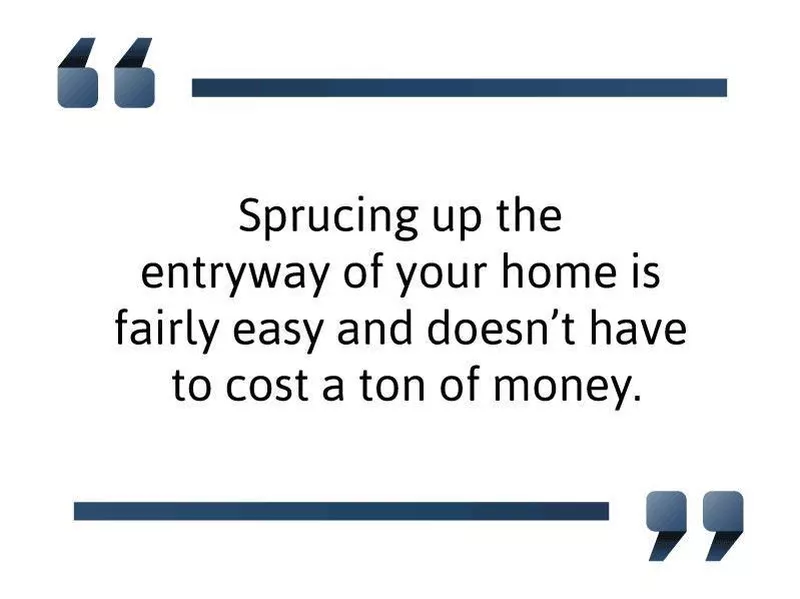
Don’t forget that the entryway is where people are going to form their first impression of your home. It’s easy to get carried away with interior renovations, but it’s just as important to remember the outside of your house.
“Anything that’s at the front of the house, that’s at the entry when they first walk in, you really want to make that more special than, say, the back of the house,” said Pringle. “That’s where you first start opening their mind, and they start thinking, ‘Well, maybe I could live here. Look how cute this is.’ That’s kind of an obvious thing, but a lot of people forget that.”
Sprucing up the entryway of your home is fairly easy and doesn’t have to cost a ton of money. For instance, you could paint your front door a bright color that contrasts with the siding and trim, plant colorful flowers in eye-catching containers, or upgrade the exterior lighting with chic lanterns or pendant lights.
Clear the Clutter
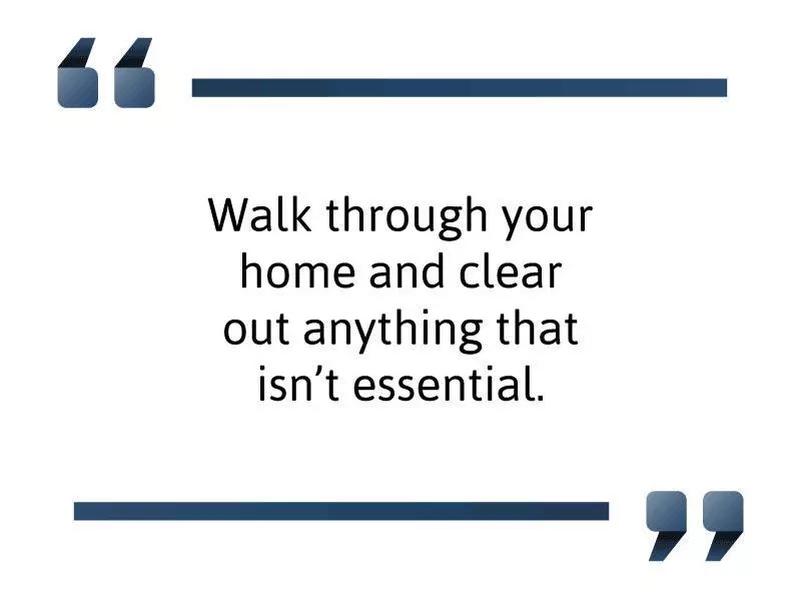
When potential buyers step into your house, they’ll want to envision themselves living there — and that’s pretty hard to do if your walls are covered in framed family photos and your kitchen counters are littered with all your favorite cooking gadgets. In a 2017 survey by the National Association of Realtors, 93 percent of agents recommended decluttering a home as the most common home improvement that sellers should make.
Walk through your home and clear out anything that isn’t essential. Countertops and shelves should be relatively bare with just some simple yet striking decor accessories. Even closets should look organized and appealing.
Check out Marie Kondo’s “Life-Changing Magic of Tidying Up” for tips on how to simplify and declutter your home.
Hire a Stager
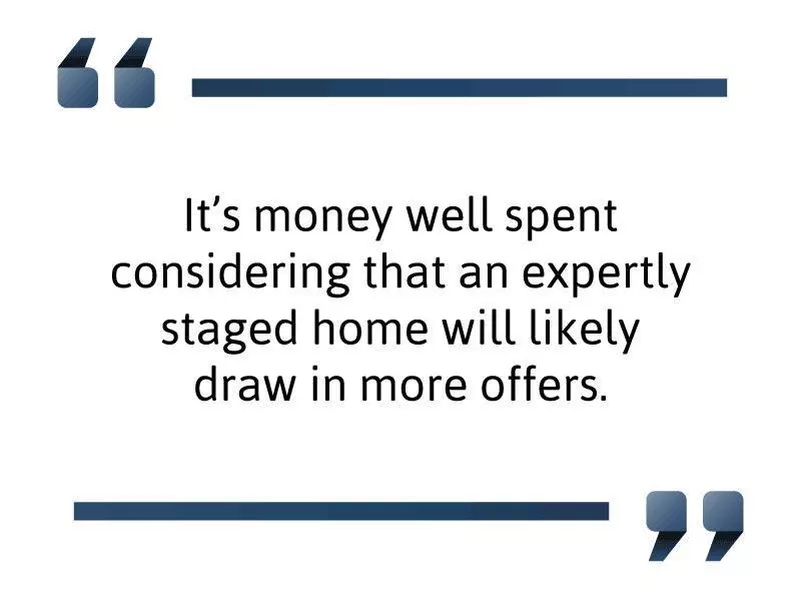
The best way to clear out the clutter is to hire a professional stager. A good stager will be able highlight all the best features of your home and minimize the flaws. He or she will know which items should go into storage or if your clunky dining table needs to be replaced with a sleeker, high-end design.
The cost of staging varies depending on where you live, but it’s money well spent considering that an expertly staged home will likely draw in more offers. Your realtor can usually recommend a professional stager who has had successful results in the past.
Stay on Top of Repairs
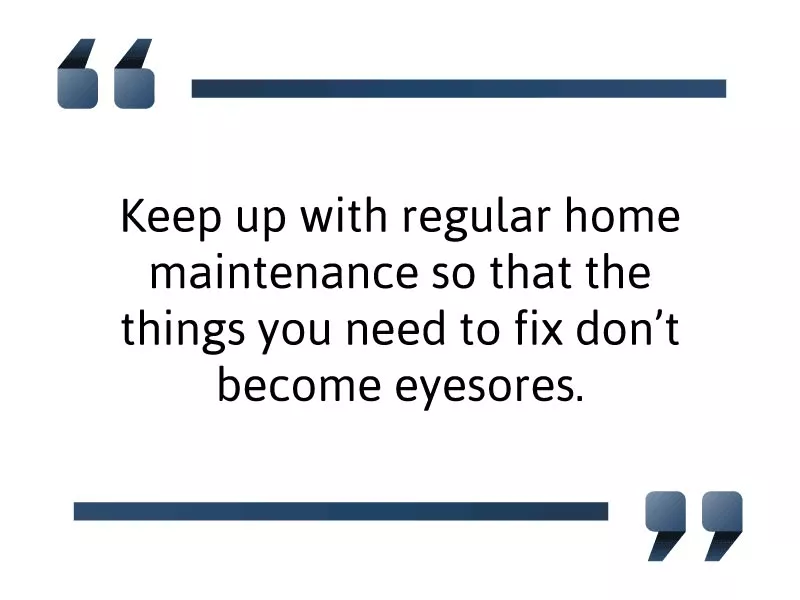
Buyers are extremely nitpicky. If they see dry rot in the eaves or a small retaining wall that’s leaning, they’ll immediately be put off. Be sure to keep up with regular home maintenance so that the things you need to fix don’t become eyesores.
“You want to go through and say, ‘If it’s not a lot to fix, let’s fix it,” said Pringle. “The best buyers are very critical — and you don’t want them thinking about that or thinking the house is falling down the hill. I’m not saying cover things up. I’m saying fix these things properly and do it for less money.”
Freshen up the Paint
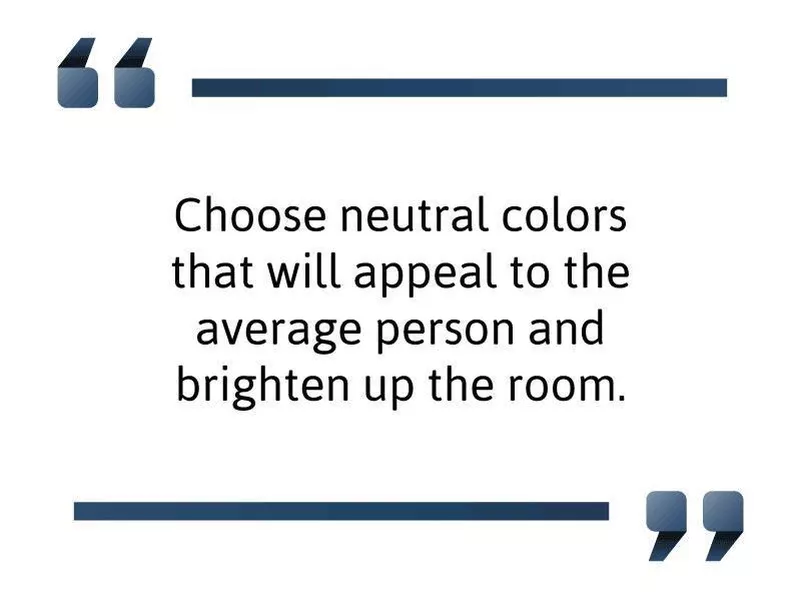
It may seem like a small thing, but a fresh coat of paint can completely revamp a room. Plus, if you decide to pick up that paint can yourself instead of hiring a professional, it’s relatively inexpensive.
Choose neutral colors that will appeal to the average person and brighten up the room.
Increase Your Living Space
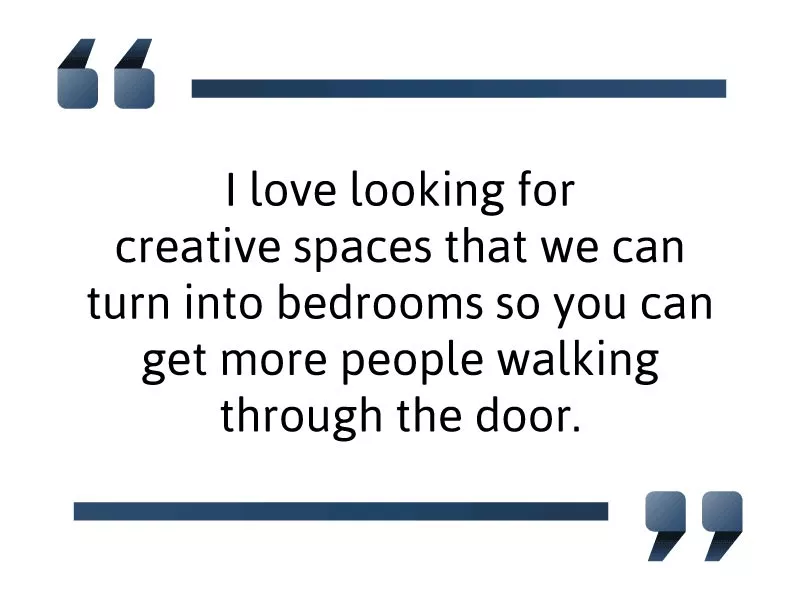
It might seem like a no-brainer, but if you can get creative with your living space and tack on some additional square footage, it will immediately add more value to your house. “I love looking for creative spaces that we can turn into bedrooms so you can get more people walking through the door,” said Pringle.
For instance, one house that Pringle listed was a three-bedroom home, but it had an unusually large laundry room with a window. “So we moved the laundry into a little nook in the garage, and then we added a closet to the former laundry room and made the house a four-bedroom — and they made another $100,000 or $150,000,” he said.
Make Your Home More Energy Efficient
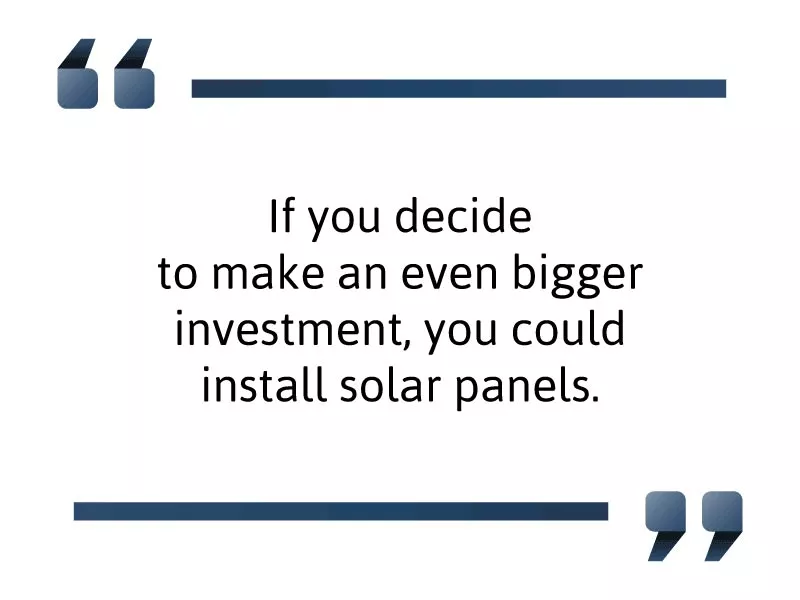
Energy-efficient upgrades not only appeal to potential buyers, but they’ll usually pay off even if you’re not planning to sell. Double-pane windows, insulation and LED lighting will help you save on utility bills, which is a big selling point with potential buyers.
Energy Star certified appliances not only lower your monthly energy bill, but many of them use less water as well. For instance, Energy Star clothes washers use approximately 25 percent less energy and 33 percent less water than standard models.
If you decide to make an even bigger investment, you could install solar panels. But you’ll want to get an estimate first and find out if your state offers any tax credits or deductions on top of the federal rebate.
Revamp Your Kitchen
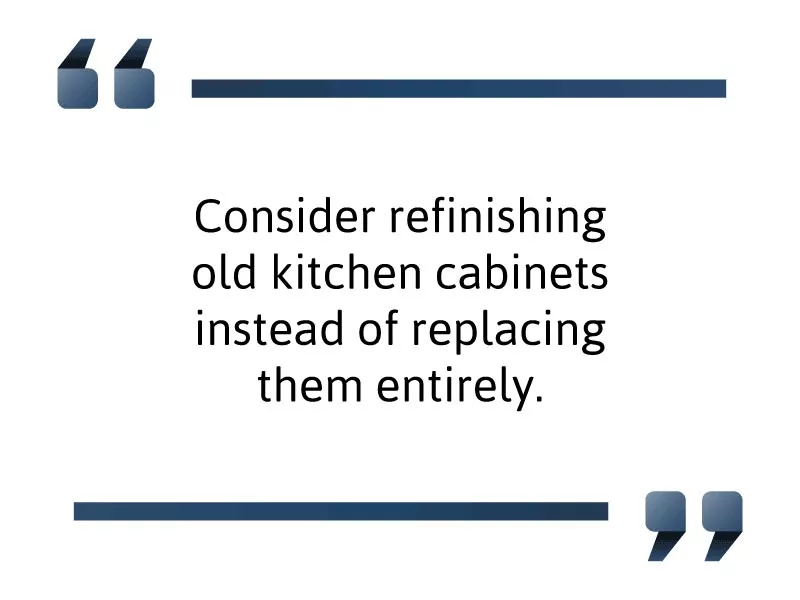
“The kitchen is the most important return on investment in a house,” said Pringle. After all, the kitchen is the heart of your home — and the place where most buyers will look first when they’re determining whether or not they like a house.
But with kitchen remodels, the costs of upgrades can add up quickly. You’ll need to assess how much a revamp will cost versus how much you think you’ll get out of it once your home hits the market.
You can do a lot of kitchen upgrades yourself, such as painting and swapping out drawer pulls. But you’ll likely require some help for the bigger improvements. To save money, consider refinishing old kitchen cabinets instead of replacing them entirely, or you can purchase cabinets at a big-box retailer like Ikea.
Don’t Go Overboard on the Bathrooms
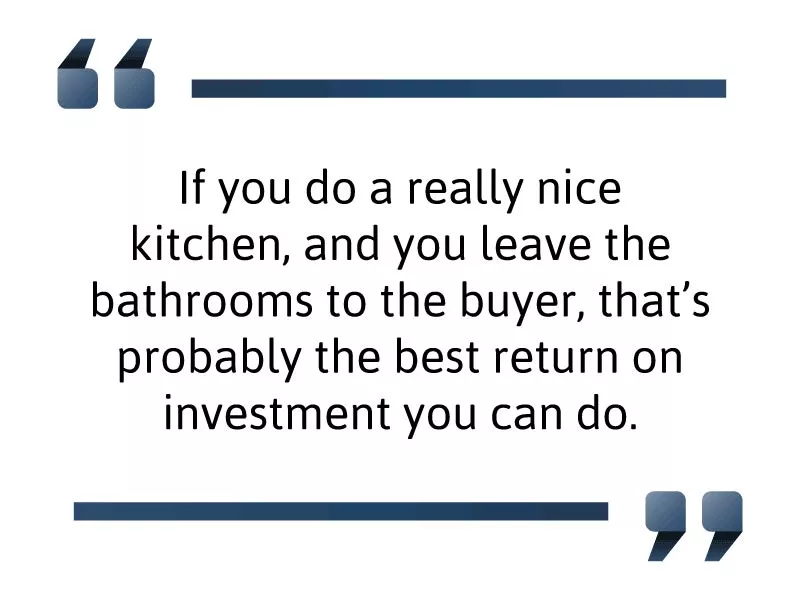
Once you focus on the kitchen and really make it shine, you can turn your attention to the bathrooms — but don’t go overboard in your efforts.
“You don’t really have to do bathrooms. It’s fascinating,” said Pringle. “If you do a really nice kitchen, and you leave the bathrooms to the buyer, that’s probably the best return on investment you can do.”
Make small improvements to a bathroom that will cost you very little money. Purchase new towels or replace a tacky medicine cabinet from the ‘70s with a contemporary chrome or brass mirror.
Make Your House “Smarter”

Smart-home products like smart thermostats and smart locks are costing less and less each year, but they’re still a new enough niche that they’ll help a home stand out to a potential buyer.
For instance, the Nest thermostat, which only costs $249, may not seem like a very exciting addition to a home — after all, it’s just a thermostat. But when people find out that it can save them 10 percent to 12 percent on heating and cooling, or an average of $131 to $145 a year, that might make them stop and think.
Not only do smart devices increase the efficiency of a home, but they add in an extra level of security as well. More than half of women and 64 percent of Millennials in a Better Homes and Gardens survey reported that smart technology makes them feel like their homes are safer and thus more enjoyable.
If you do add some nifty smart-home features to your home, be sure your real estate agent is on board and will tout the bonuses to potential buyers.
Get Your Inspection Reports
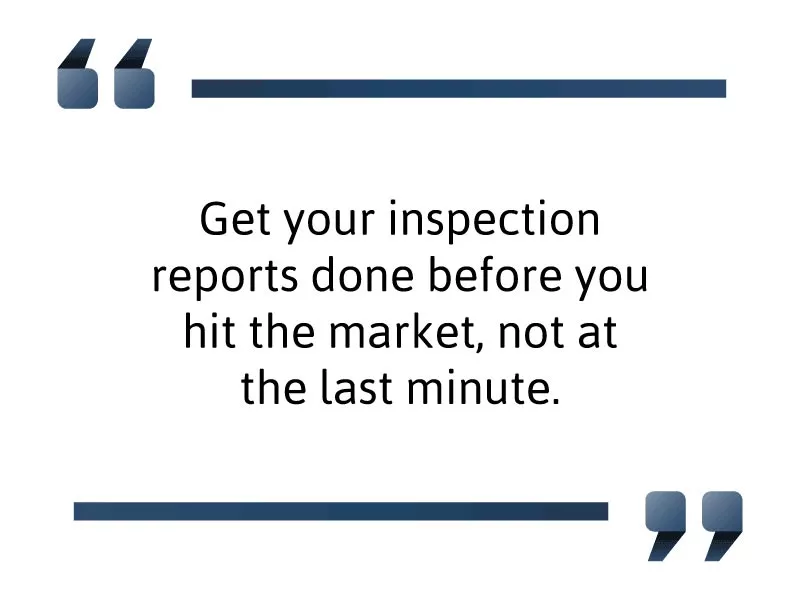
Before you go ahead and put your home on the market, you need to make sure you get ahead of any surprises. Get your inspection reports done before you hit the market, not at the last minute. The inspection reports will uncover anything you didn’t see that you could possibly get fixed for a lot less ahead of time.
“That is going to give you a big return,” said Pringle. “You’re not in escrow, and the buyer doesn’t have you by the balls so to speak, because you’ve already got ahead of that, and you’ve fixed it for a lot less than what a buyer might try to do to take advantage of you.”